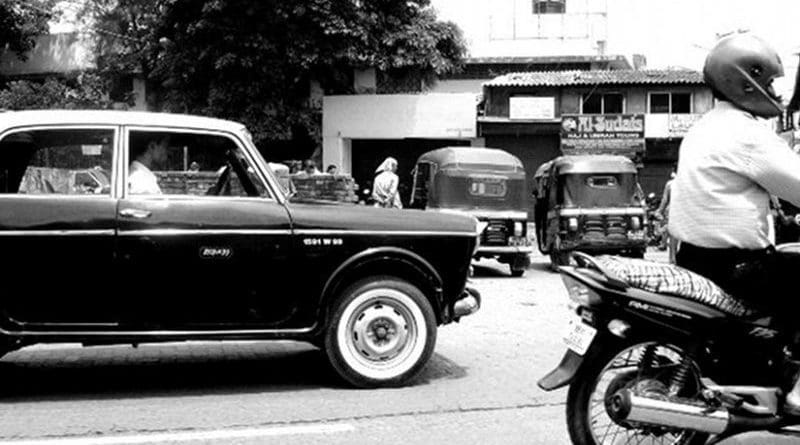‘Gas Chamber’ Cities And Dangers Nuclear – OpEd
By IPCS
By Manpreet Sethi*
Come November and the entire Indo-Gangetic plain running across the northern regions of Pakistan and India comes under a dirty grey haze. Major cities in these areas begin gasping for breath. A mix of a natural phenomenon and mindless human activity makes for a lethal cocktail of air pollution. Winter smog in Beijing and other Chinese cities puts its residents to the same risk year after year.
As air purifiers become the new status symbols and face masks run into short supply, thinking the unthinkable looks like a good idea. Hopefully, this health emergency will pass and the air quality index will return from severe to moderate soon. But, what if the air had been radioactive? What if it had been caused after a few mushroom clouds went up, in which case, the air would also contain vast amounts of toxic gases generated by thermal fires devouring modern buildings made with synthetic materials and chemical components? How soon could normalcy be expected in that situation?
For those who talk about the use of nuclear weapons in a rather cavalier fashion and project nuclear war-fighting as feasible, this is a moment to pause and think deeply about what this use can mean in real terms. Strategies that propagate battlefield use of nuclear weapons cannot guarantee the possibility that the situation will not escalate into a larger exchange. Hiroshima and Nagasaki were incidents of one bomb use each. This luxury will not be obtained in the future.
During the years of the Cold War when the two nuclear superpowers were in an eyeball-to-eyeball confrontation and the risk of nuclear war was considered imminent, several studies estimated the likely damage to life and society. These ranged from accounting for the mutual assured destruction of civilisation, to the more ‘limited’ damage caused if the two sides were to exchange only a fraction of their nuclear arsenal. Yet, even in the case of the latter, the effects were beyond imagination with at least 35 million dead and 10 million seriously injured in each country, besides long-term health hazards of ionising radiation and electromagnetic pulse. There are also risks to the ozone layer, including the prospect of nuclear winter as nuclear explosions create immense quantities of dust and smoke, which would blanket out sunlight.
Such a spectre was believed to have passed with the end of the Cold War. However, the possibility of a deliberate or inadvertent nuclear war, even if at a much smaller scale, still exists. If such a scenario were ever to occur, god forbid, the implications would be more than nation or region-specific. Of course, the immediate areas of destruction and suffering would be the ones closest to ground zero, but the ripples would go deeper and wider.
Nuclear weapons are in a category of their own because their impact transcends space and time. Just to provide one example, it has been calculated that for up to a few decades after a few nuclear explosions of even kiloton yield, the local and regional fallout would result in thousands of cancers through ingestion of radionuclide deposited on plants and soil, and inhalation of ground level air, genetic abnormalities, miscarriages, increased susceptibility to disease, vision impairment, and lifelong emotional and social problems among the survivors.
Besides the immediate human tragedy, one can only imagine the likely environmental consequences and the damage that would be caused to the biosphere’s capacity to support human life of the quality that exists. While some argue that contaminated regions could be isolated, one has to only imagine (if possible) the implications of this in terms of large-scale migrations, population pressures on ecologically fragile areas, and the social upheaval it could cause. The possibility of food shortages, the paucity of shelters, and the strain on health infrastructure will make sheer physical survival an ordeal.
Meanwhile, given the large-scale interdependence of modern economies, a nuclear exchange will have far-reaching and most unintended economic consequences. Fuel supply disruptions would bring many activities to a standstill and leave an impact on the economies of more than the countries that have suffered a nuclear exchange.
Lastly, the consequences for the international standing of the countries involved cannot be ignored since factors such as human resources, economic performance, education, health, etc would all be weakened and recovery would be a long drawn process with unpredictable impact on the societal patterns of behaviour and human interaction.
Therefore, nuclear war-fighting is not a subject to be taken lightly. Countries that indulge in casual nuclear brinkmanship and maintain a first use posture place the fate of countless individuals – directly or indirectly – at peril. The ‘gas chambers’ that Delhi and Lahore today are, a situation that is not unfamiliar to Beijing either, provides a very, very, very low-level sample of what countries could face after the use of nuclear weapons. And, no one finds this bearable! Grey skies, burning eyes and a choking sensation that afflict all equally is a good time to think more seriously about the ongoing nuclear stalemates across the world, and of course, in the South Asian region.
* Manpreet Sethi
Senior Fellow and Project Leader, Nuclear Security, Centre for Air Power Studies (CAPS), New Delhi

